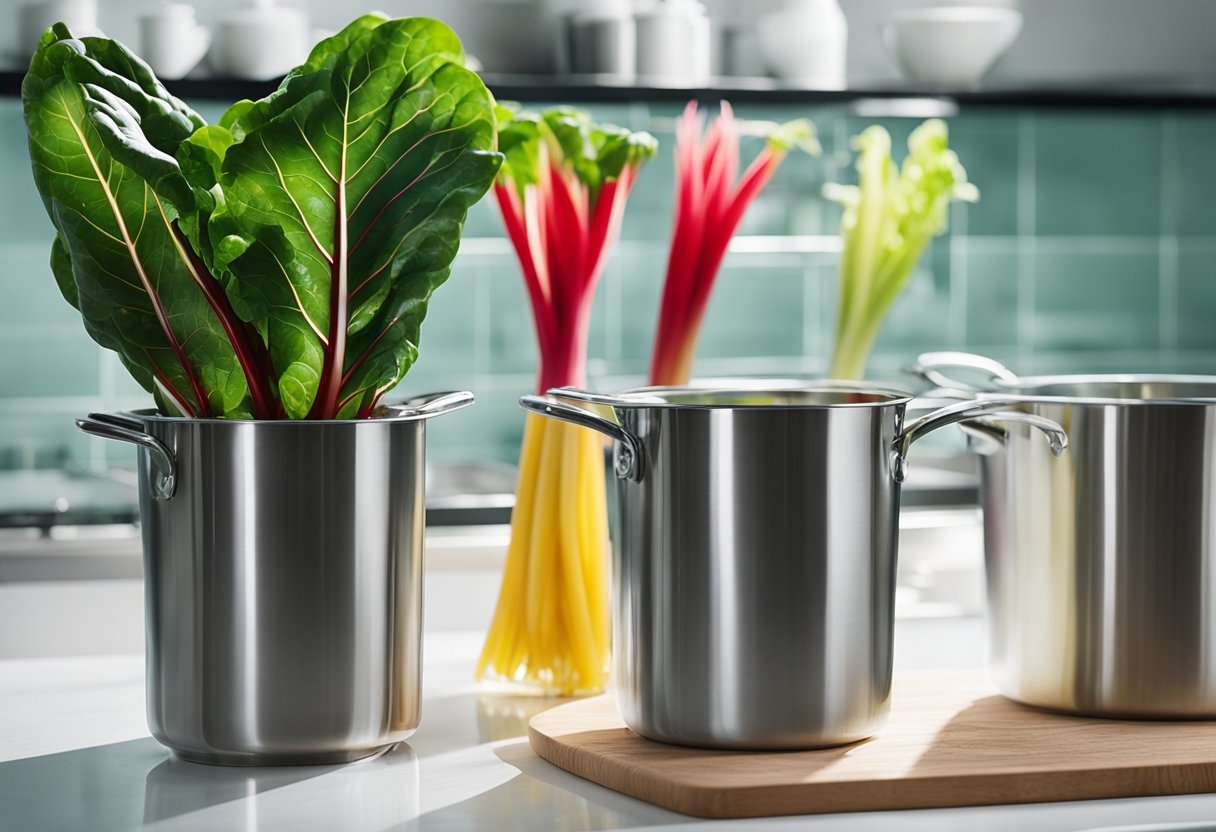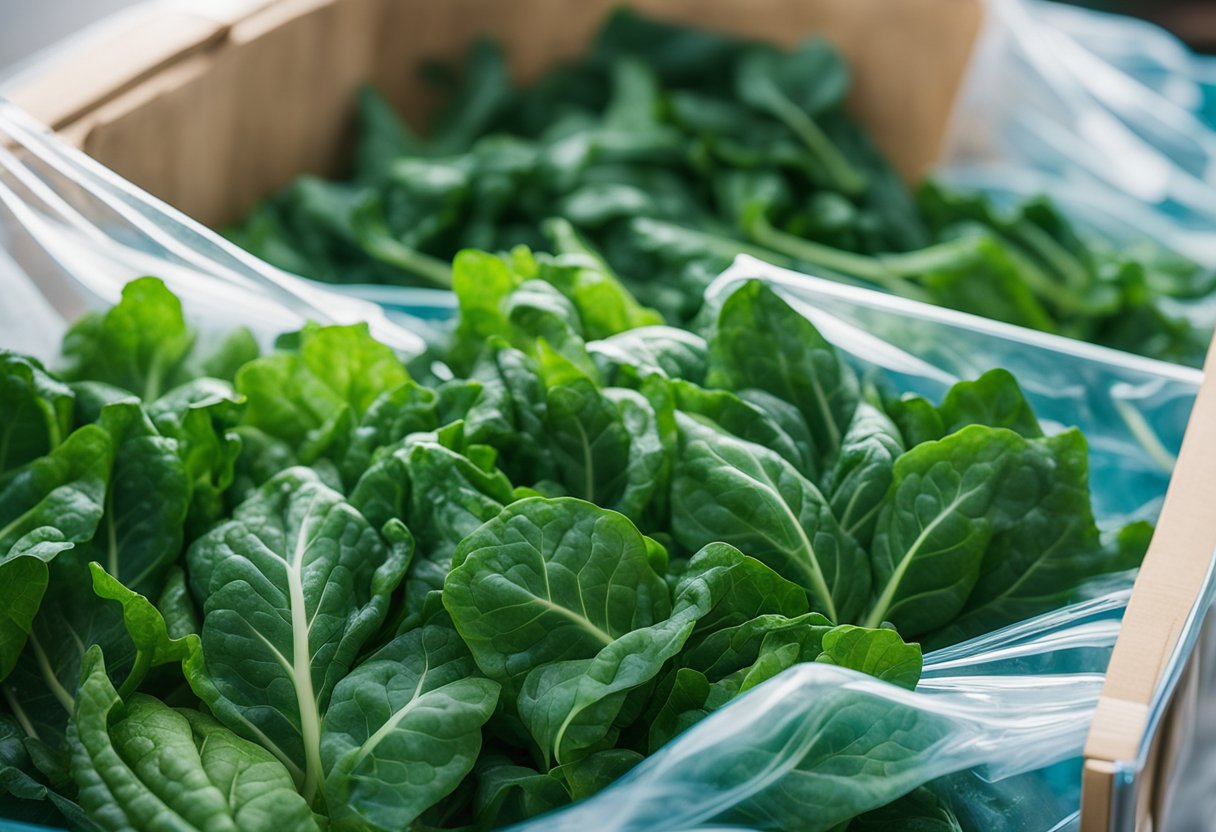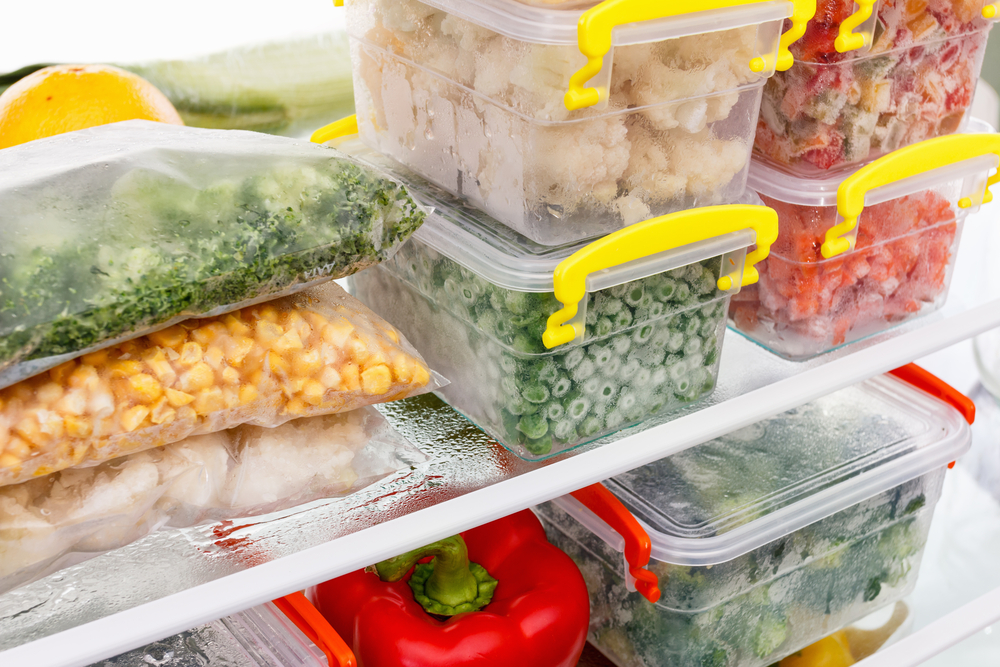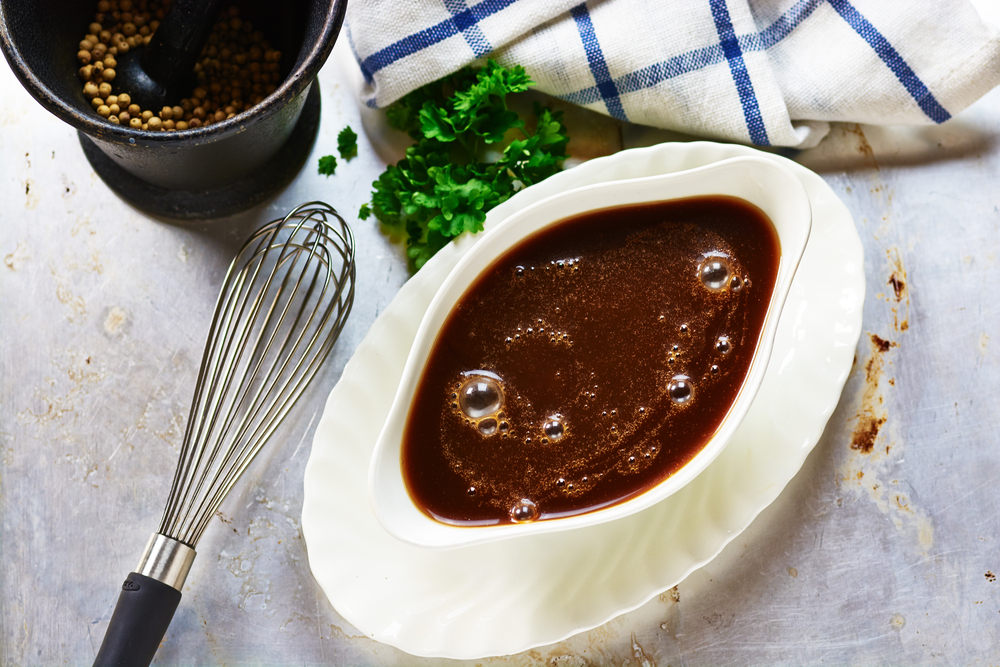I have always enjoyed Swiss chard, and I often find myself with more than I can eat. Freezing Swiss chard is an excellent way to preserve this nutritious vegetable and enjoy it all year round.
However, freezing Swiss chard requires some preparation and knowledge to ensure that it stays fresh and flavorful.

To freeze Swiss chard, you need to understand the proper preparation techniques, including blanching, draining, and packaging. Blanching Swiss chard preserves its flavor and stops the enzymes that cause browning after long storage periods.
After blanching, you need to drain the excess water, package the Swiss chard, and freeze it. Utilizing frozen Swiss chard is easy, and it can be used in a variety of dishes, including soups, stews, and casseroles.
Key Takeaways
- Proper preparation is essential when freezing Swiss chard.
- Blanching Swiss chard before freezing preserves its flavor and stops the enzymes that cause browning after long storage periods.
- Frozen Swiss chard can be used in a variety of dishes, including soups, stews, and casseroles.
Understanding Swiss Chard

As a leafy green, Swiss chard is a versatile and nutrient-rich vegetable that can be enjoyed in a variety of dishes. It is a member of the beet family and is often referred to simply as “chard.”
Swiss chard comes in a variety of colors, including green, white, yellow, and red. The leaves are typically large and tender, while the stems are crunchy and slightly sweet. The texture of Swiss chard can be described as slightly chewy, with a slight bitterness that is balanced by its sweetness.
Swiss chard is believed to have originated in the Mediterranean region and was introduced to South Africa in the late 19th century. Today, it is grown in many parts of the world and is a popular ingredient in many cuisines.
One of the great things about Swiss chard is its versatility. It can be eaten raw in salads or cooked in a variety of ways, including sautéed, steamed, boiled, or roasted. The stems can be cooked separately or added to dishes along with the leaves.
In terms of nutrition, Swiss chard is a great source of vitamins A, C, and K, as well as minerals like iron, magnesium, and potassium. It is also high in fiber and low in calories, making it a great addition to any healthy diet.
Overall, Swiss chard is a delicious and nutritious vegetable that can be enjoyed in a variety of ways. Whether you’re looking to add more greens to your diet or simply want to try something new, Swiss chard is definitely worth a try.
Preparing for Freezing
Before freezing Swiss chard, it is important to properly clean and prepare the leaves. Here are the steps I follow to ensure my Swiss chard is ready for freezing:
- Wash the leaves: I start by washing the Swiss chard leaves thoroughly under cold running water. This helps to remove any dirt, insects, or debris that may be on the leaves.
- Use a salad spinner: After washing, I use a salad spinner to remove any excess water from the leaves. If you don’t have a salad spinner, you can also pat the leaves dry with a clean towel.
- Remove the stems: Next, I remove the thick stems from the leaves. The stems can be saved and frozen separately if desired.
- Separate the leafy greens: Once the stems are removed, I separate the leafy greens into smaller pieces. This makes it easier to freeze and use later on.
- Prepare for cleaning: If the Swiss chard is particularly dirty, I will soak the leaves in a bowl of cold water for a few minutes before washing. This helps to loosen any dirt or debris that may be stuck to the leaves.
By following these steps, I can ensure that my Swiss chard is clean and ready for freezing.
Blanching Process
Blanching is a crucial step when it comes to freezing Swiss chard. It helps to preserve the color, texture, and flavor of the vegetable. The process involves briefly cooking the chard in boiling water and then immediately cooling it down in ice water. This helps to stop the enzyme activity that can cause the chard to spoil.
To start the blanching process, I fill a pot with water and bring it to a boil. The pot should be large enough to accommodate the chard without overcrowding it. Overcrowding can cause the chard to cook unevenly.
Once the water is boiling, I add the Swiss chard to the pot using tongs or a slotted spoon. I make sure to submerge the chard completely in the boiling water. I then set a timer for one minute.
After one minute, I remove the chard from the boiling water and immediately transfer it to a bowl of ice water. The ice water helps to cool down the chard quickly and stop the cooking process. I leave the chard in the ice water for the same amount of time it was in the boiling water.
Once the chard is cool, I remove it from the ice water and drain it well. I then pat it dry with a clean towel or paper towel to remove any excess moisture.
It is important to note that blanching times may vary depending on the size and thickness of the chard leaves. Thicker leaves may require longer blanching times, while thinner leaves may require less time. It is also important to not overcook the chard during the blanching process, as this can cause it to become mushy.
Overall, blanching is a simple yet important step when it comes to freezing Swiss chard. It helps to preserve the quality of the vegetable and ensure that it tastes fresh when it is thawed and cooked.
Draining and Packaging

After blanching your Swiss chard, it is important to drain and package it properly to ensure it stays fresh and flavorful in the freezer. Here are some tips for draining and packaging your Swiss chard:
- Remove the chard leaves from the ice water bath and allow them to drain thoroughly. You can use a colander or simply lay them out on a clean kitchen towel or paper towels.
- Gently squeeze out any excess water from the leaves. This will prevent ice crystals from forming and help the chard retain its texture and flavor.
- Divide the leaves into portion sizes that suit your needs. You can choose to freeze them in individual servings or larger quantities, depending on how you plan to use them.
- Place the chard leaves in freezer-safe containers or plastic freezer bags. Be sure to remove as much air as possible from the bags before sealing them to prevent freezer burn.
- Label the containers or bags with the date and contents. This will help you keep track of what you have in your freezer and ensure that you use the oldest chard first.
If you want to take extra precautions to prevent freezer burn, you can use vacuum-sealed bags or glass containers with tight-fitting lids. Just be sure to leave enough headspace in the containers to allow for expansion as the chard freezes.
By following these simple steps, you can freeze Swiss chard and enjoy it all year round.
Freezing Swiss Chard
As a home cook, I always try to preserve the freshness and nutrients of my produce for as long as possible. One of the best ways to do this is by freezing.
Swiss chard is a leafy green vegetable that can be easily frozen and used later in dishes like casseroles, frittatas, and soups. In this section, I will share my knowledge on how to freeze Swiss chard properly.
Preparing Swiss Chard for Freezing
Before freezing Swiss chard, it is essential to prepare it properly. Here are the steps I follow:
- Rinse the Swiss chard leaves thoroughly under cold running water to remove any dirt or debris.
- Cut off the stem where it meets the leaf.
- Stack several leaves on top of one another and chop them into bite-size pieces.
- Chop the stems into small pieces.
- Blanch the Swiss chard in boiling water for 2-3 minutes, depending on your preference.
- Transfer the Swiss chard to a bowl of ice water to stop the cooking process and preserve its bright green color.
- Drain the Swiss chard in a colander and pat it dry with a clean kitchen towel or paper towel.
Freezing Swiss Chard
Once you have prepared the Swiss chard, it is time to freeze it. Here are the steps I follow:
- Place the Swiss chard in a single layer on a baking sheet or tray. This prevents the leaves from sticking together during freezing.
- Cover the baking sheet with plastic wrap or aluminum foil and place it in the freezer.
- Freeze the Swiss chard for 2-3 hours or until it is completely frozen.
- Transfer the frozen Swiss chard to a freezer-safe container or plastic bag.
- Label the container or bag with the date and contents.
- Place the container or bag in the freezer.
Avoiding Freezer Burn
Freezer burn occurs when food is exposed to air in the freezer, causing it to dry out and develop a tough texture. To avoid freezer burn when freezing Swiss chard, be sure to:
- Use airtight freezer-safe containers or plastic bags.
- Remove as much air as possible from the bags before sealing them.
- Store the Swiss chard in the coldest part of the freezer.
Thawing Frozen Swiss Chard
When you are ready to use frozen Swiss chard, it is essential to thaw it properly. Here are the steps I follow:
- Remove the Swiss chard from the freezer and place it in the refrigerator overnight to thaw slowly.
- Alternatively, you can thaw Swiss chard quickly by placing it in a bowl of cold water for 30 minutes to an hour, depending on the amount of Swiss chard.
- Once the Swiss chard is thawed, use it in your favorite recipe.
In conclusion, freezing Swiss chard is a great way to preserve its freshness and nutrients for later use. By following the steps outlined in this section, you can ensure that your frozen Swiss chard stays fresh and delicious.
Utilizing Frozen Swiss Chard
Once you have successfully frozen your Swiss chard, you may be wondering how to use it in your cooking. Fortunately, frozen Swiss chard can be used in many different recipes, from soups and stews to frittatas and sautéed dishes.
One of my favorite ways to use frozen Swiss chard is in soups and stews. Simply add the frozen chard to your favorite recipe during the last 10-15 minutes of cooking time. The chard will thaw and cook quickly, adding a nutritious boost to your dish.
Another great use for frozen Swiss chard is in frittatas. Simply thaw and drain the chard, then add it to your frittata mixture along with sautéed onions and garlic for a delicious and healthy breakfast or brunch option.
Frozen Swiss chard can also be sautéed and served as a side dish. Thaw the chard and squeeze out any excess water, then sauté it with onions and garlic for a flavorful and nutritious side dish. You can also add potatoes or other vegetables to the mix for a heartier dish.
If you don’t have Swiss chard on hand, you can easily substitute other greens such as kale, spinach, or collard greens in your recipes. Simply follow the same freezing and cooking instructions as you would for Swiss chard.
Overall, frozen Swiss chard is a versatile and nutritious ingredient that can be used in a variety of dishes. By following these simple tips and incorporating frozen chard into your cooking, you can enjoy the benefits of this delicious and healthy vegetable all year round.
Preserving Swiss Chard
As a home gardener, I love growing my own Swiss chard. It’s a nutritious and versatile green that adds a pop of color to any dish. However, Swiss chard has a relatively short growing season, so it’s essential to preserve it to enjoy it all year round.
One of the best ways to preserve Swiss chard is by freezing it. Freezing is a simple and effective method that retains the flavor and nutrients of the green. Here’s what I do to freeze Swiss chard:
- Harvesting: I usually harvest Swiss chard in the morning when the leaves are fresh and crisp. I cut the leaves at the base of the stem, leaving about an inch of the stem intact.
- Cleaning: After harvesting, I rinse the Swiss chard leaves under cold running water to remove any dirt or debris. I then pat them dry with a clean kitchen towel.
- Blanching: Blanching is an essential step in freezing Swiss chard. It helps to preserve the color, flavor, and nutrients of the green. To blanch Swiss chard, I bring a large pot of water to a boil and add the leaves. I blanch the leaves for about two minutes, then transfer them to a bowl of ice water to stop the cooking process.
- Freezing: Once the Swiss chard leaves are blanched and cooled, I drain them and pat them dry with a clean kitchen towel. I then place them in a freezer-safe container or bag and label them with the date.
When I’m ready to use the frozen Swiss chard, I simply take it out of the freezer and add it directly to my soups, stews, or stir-fries. It’s that easy!
Overall, freezing Swiss chard is a simple and effective way to preserve this nutritious green. Whether you grow your own or buy it fresh from the market, freezing is a great way to enjoy Swiss chard all year round.
Thawing and Reheating
After freezing Swiss chard, it is important to know how to properly thaw and reheat it to ensure that it maintains its texture and flavor.
Thawing
To thaw frozen Swiss chard, simply remove the desired amount from the freezer and transfer it to the fridge. Allow it to thaw in the fridge for several hours or overnight. It is important to avoid thawing the chard at room temperature or in warm water as this can cause the texture to become mushy.
Reheating
Once the Swiss chard is thawed, it can be reheated in a variety of ways. One option is to sauté it in a pan with olive oil and garlic until it is heated through.
Another option is to add it to soups or stews during the last few minutes of cooking. Swiss chard can also be reheated in the microwave by placing it in a microwave-safe dish and heating it in 30-second intervals until it is heated through.
If you are using an Instant Pot, you can add the thawed Swiss chard to your recipe and cook it on high pressure for 1-2 minutes. Be sure to use the quick release function to prevent overcooking.
Storing Leftovers
If you have leftover cooked Swiss chard, it can be stored in an airtight container in the fridge for up to 3-4 days. To reheat, simply follow the same instructions as reheating frozen Swiss chard.
Overall, thawing and reheating Swiss chard is a simple process as long as you follow the proper steps. By doing so, you can enjoy the delicious and nutritious leafy green any time of year.
Additional Tips and Considerations
When it comes to freezing Swiss chard, there are a few additional tips and considerations to keep in mind to ensure the best results.
First, it’s important to note that the flavor and taste of Swiss chard can vary depending on the color of the leaves. Rainbow chard, for example, can have a slightly sweeter taste compared to traditional green chard.
Yellow and orange varieties can also be slightly sweeter. Keep this in mind when selecting and preparing your chard for freezing.
Another consideration is the bitterness of the chard. While some people enjoy the slightly bitter taste of chard, others may find it off-putting. If you fall into the latter category, blanching the chard before freezing can help to reduce the bitterness.
When preparing your chard for freezing, consider cutting it into ribbons or bite-sized pieces to make it easier to work with. You can also use the stems to make a flavorful stock or broth.
To freeze your chard, consider using a cookie sheet to lay out the individual leaves or pieces before placing them into a freezer-safe bag or container. This can help to prevent the chard from clumping together and make it easier to portion out later.
Finally, keep in mind that freezing can impact the nutrient content of the chard. While the chard will still be edible and nutritious after freezing, it may not have the same nutrient profile as fresh, raw chard.
Frequently Asked Questions
How do you prepare Swiss chard for freezing?
To prepare Swiss chard for freezing, first rinse the fresh greens under cold running water to clean them. Then, use a sharp paring knife or your hands to separate the Swiss chard leaves from the stalk.
Next, blanch the Swiss chard before freezing to preserve the flavor and stop the enzymes that cause browning after long storage periods.
To blanch, bring a large pot of salted water to a boil, then add the Swiss chard leaves and cook for 2-3 minutes. After blanching, transfer the Swiss chard to an ice water bath to stop the cooking process. Finally, drain the Swiss chard and pat it dry before packing it into freezer-safe bags or containers.
Can you freeze cooked Swiss chard?
Yes, you can freeze cooked Swiss chard. However, it is best to freeze it in small portions, so you can easily thaw and reheat only what you need.
To freeze cooked Swiss chard, let it cool to room temperature, then transfer it to an airtight container or freezer-safe bag. Be sure to label the container with the date and contents before placing it in the freezer.
How do you blanch Swiss chard before cooking?
To blanch Swiss chard before cooking, bring a large pot of salted water to a boil. Add the Swiss chard leaves and cook for 2-3 minutes, or until they are bright green and tender.
After blanching, transfer the Swiss chard to an ice water bath to stop the cooking process. This will help preserve the flavor, color, and texture of the Swiss chard.
Can I freeze Swiss chard raw?
Yes, you can freeze Swiss chard raw. However, it is best to blanch it first to preserve the flavor and stop the enzymes that cause browning after long storage periods. To freeze raw Swiss chard, first rinse the fresh greens under cold running water to clean them.
Then, use a sharp paring knife or your hands to separate the Swiss chard leaves from the stalk. Next, blanch the Swiss chard by following the instructions above. After blanching, drain the Swiss chard and pat it dry before packing it into freezer-safe bags or containers.
How to store Swiss chard in the fridge
To store Swiss chard in the fridge, first rinse the fresh greens under cold running water to clean them. Then, wrap the Swiss chard in a damp paper towel and place it in a plastic bag or airtight container. This will help keep the Swiss chard fresh and crisp for up to 5 days.
Can you vacuum seal Swiss chard?
Yes, you can vacuum seal Swiss chard. Vacuum sealing is an excellent way to preserve the flavor and texture of Swiss chard for an extended period. To vacuum seal Swiss chard, first blanch it by following the instructions above. After blanching, drain the Swiss chard and pat it dry.
Then, vacuum seal the Swiss chard in a freezer-safe bag or container, making sure to remove as much air as possible before sealing. Be sure to label the container with the date and contents before placing it in the freezer.







